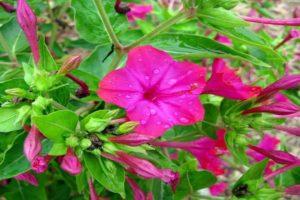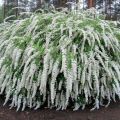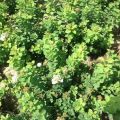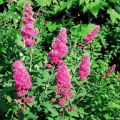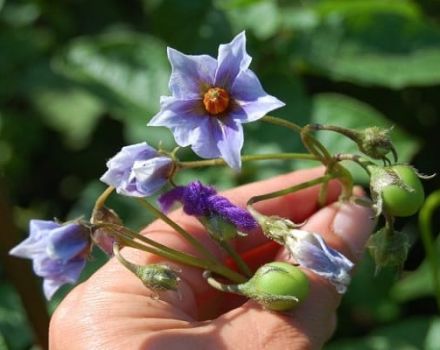Planting and caring for spirea at home, reproduction, pruning and transplanting
Spirea (in a number of sources referred to as meadowsweet) is an ornamental plant, characterized by small flowers that form large bouquets. Shrubs are classified into two large groups, depending on the season of flowering (spring and autumn). Despite belonging to ornamental crops, the reproduction of spirea, planting and caring for the plant does not cause difficulties.
General description of spirea
Spirea has the following features:
- the height of the bushes - up to 2.5 meters (tall plant varieties) or 15 centimeters (dwarf);
- the root system is fibrous, shallow;
- the color of the branches varies from dark to gray shades;
- the color of the flowers varies from crimson to white;
- does not like winter (with the exception of dwarf species);
- one inflorescence forms several small flowers;
- the location of the inflorescences depends on the type of shrub.
The variety of spirea largely determines the appearance of the plant. In particular, there are varieties in which the branches either stand or spread along the ground.This culture is planted to form hedges, garden decoration and rocky gardens. Therefore, before buying a shrub, it is recommended to decide in advance on the goals of planting spirea.
Varieties and types of plants
Spireas are classified into two groups, depending on the flowering period: spring and autumn. In Central Russia and Siberia, gardeners prefer to grow the following shrub varieties:
- Average. Differs in large (up to two meters) size and increased resistance to drought and frost. White flowers open in May and last for three weeks.
- Birch-leaved. 1-2 meter shrub that can grow in Siberia. Berezolistnaya flowers, which appear in May, gather in white buds up to 10 centimeters in diameter.
- Gorodchaty. A small (up to a meter) variety of spirea with large golden inflorescences. The crop is resistant to drought and frost, as well as a good root system that strengthens the flowing soil.
- Gray. On the bushes of the spirea of this variety, many large flowers are formed, because of which the branches bend to the ground.
- Oak-leaved. The buds, formed by white flowers, look like umbrellas and stay on the plant for 25 days, from May to June. The Dubravkolistnaya Spirea variety allows you to form curly bushes.
There are other types of garden culture. Breeders have developed varieties that bloom in mid-summer. And a number of dwarf varieties have a wide crown.
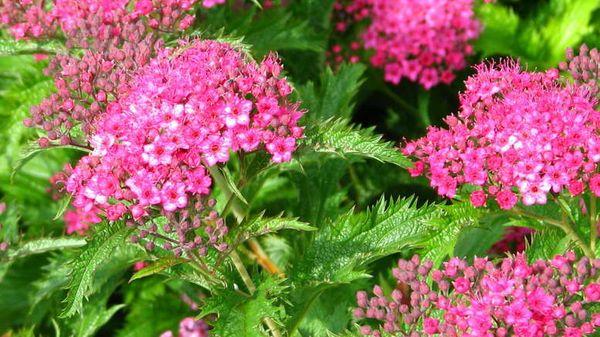
The subtleties of growing a culture
Spirea is a plant that is undemanding to the place of growth. Some varieties are resistant to prolonged drought and low temperatures. The shrub grows well in urban environments with gassed air. The first flowers (with the exception of annual varieties) appear on the branches in the third year after planting in open ground.
The choice of planting material
When choosing what to plant on a private plot, it is recommended to take into account the goals of growing the plant. When forming a hedge, you should give preference to tall varieties of shrubs. If you plan to create a tapeworm, then you need to purchase spireas with a long flowering period that tolerate a haircut well. And for alpine slides, dwarf crops are suitable.
Soil preparation and site
It is recommended to plant spirea in well-lit places. In this case, the shrub will bloom annually. The culture grows in various soils. However, light turf or leafy soil with a slightly acidic or neutral reaction is considered optimal for growing.

If you plan to plant in clay soils, then during the preparation it is necessary to add a mixture of sand and peat. The quality of sandy soils is improved with a small amount of clay. In addition, before planting, gardeners recommend feeding the bushes with ABA fertilizer (a tablespoon is enough for each shrub).
How and when to plant?
Autumn is considered the optimal time for planting spirea. Summer-blooming varieties are allowed to be transferred to open ground with the onset of spring, provided that the soil has had time to warm up and the buds have not swollen. Early shrubs with buds in May are recommended to be planted in autumn. During this time, the plant has time to take root enough to survive the frost. It is necessary to replant the bushes, observing the given terms.
Before transferring the cutting to open ground, you will need to prepare the place. To do this, in a pre-selected area, you need to dig a hole, the size of which is slightly larger than the root system. The depth of the hole should be 70 centimeters, since the drainage layer will take up 20 centimeters. After that, you need to do the following:
- Pour a hill of earth into the hole.
- Place the bush in the center of the hill, straightening the roots.
- Cover the cutting with soil so that the root collar remains level with the ground.
- Pour 2-3 buckets of water around the seedling.
Upon completion of the described actions, it will be necessary to mulch the soil near the shrub, filling a layer of peat with a thickness of 7 centimeters. When developing a planting scheme (if the gardener plans to grow several spirea bushes), one should take into account the size of the future plant and dig holes at a distance of 1-2.5 meters. Due to the proximity, the culture will not develop, which is why shrubs will have to be planted in the future.
Further care of the plant
Taking care of the spirea is quite simple. The plant is unpretentious and requires periodic (but not frequent) moistening of the soil and top dressing.
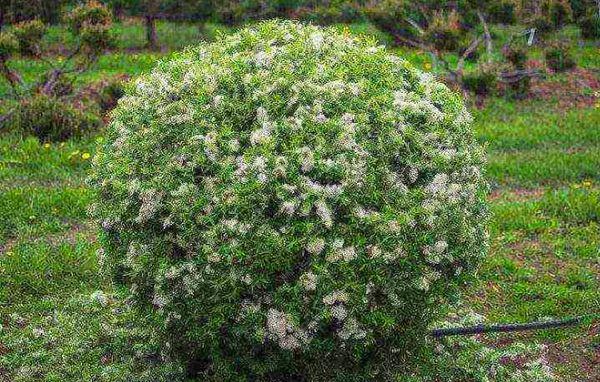
Power circuit
Gardeners use different feeding schemes. Traditionally, the plant is fertilized three times per season:
- In the spring. Mineral or organic fertilizing is introduced. Early flowering varieties also require complex fertilizers containing micronutrients.
- At the end of July. Complex mineral fertilizers are applied under the bush.
- At the end of summer. The shrub is fed with fertilizers containing phosphorus and potassium. These trace elements will prepare the plant for a long winter.
In late summer or early autumn, it is forbidden to fertilize the bushes with fertilizing, which includes nitrogen. This element stimulates the growth of new shoots, on the development of which the plant spends a lot of energy, as a result of which it does not have time to prepare for winter in 2 months.
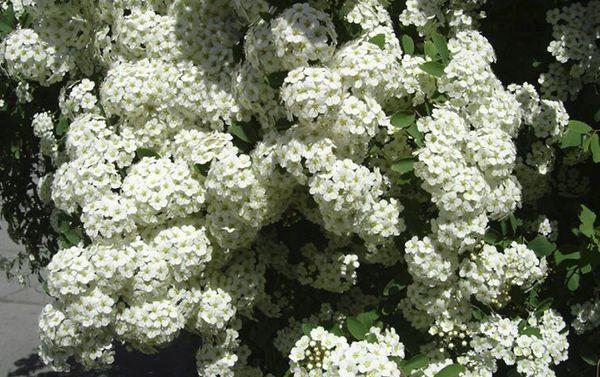
Top dressing is recommended to be applied together with watering. After fertilization, the soil around the bush must be loosened, thereby ensuring the flow of oxygen to the roots.
Irrigation mode
The frequency of watering depends on the climatic conditions in which the shrub grows. Spirea tolerates drought well. But in hot summer it requires periodic watering. More often a young plant has to be moistened. Over time, the frequency of watering can be reduced. The amount of water used to moisten the soil is determined depending on the plant variety. Under a tall bush, no more than 1.5 buckets should be poured, under dwarf spireas - up to 10 liters.
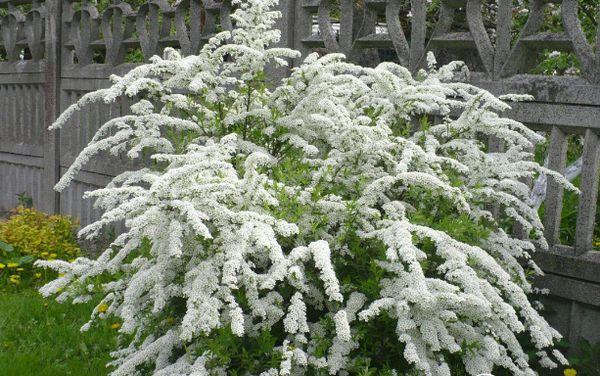
Weeding and loosening
It is necessary to weed the soil around young shrubs. Large spireas inhibit the growth of weeds due to the dense crown. The soil should be loosened after each watering.
Mulching
Peat, sawdust or husks from seeds or speech are used as mulch for spirea. These components must be poured into the circle under the crown of the bush with a layer of 6-8 centimeters. Mulch prevents rapid evaporation of moisture from the soil.
Pruning bushes
It is necessary to trim the spirea several times per season. Moreover, in each case, different goals are pursued. Gardeners do not prune spirea in the fall, except for situations when it is necessary to remove affected shoots. A similar procedure is carried out with the onset of heat. Frost-affected shoots should be removed at this time of year.
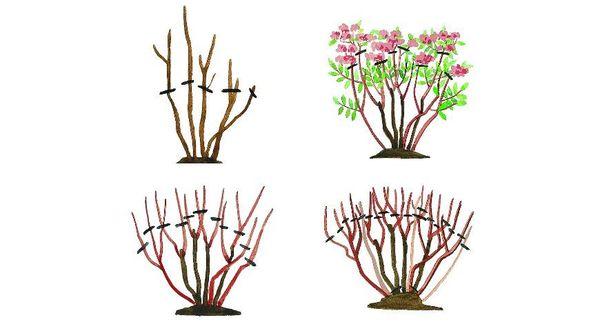
Formative pruning is carried out with the onset of spring or after flowering. The timing of this procedure depends on the variety of the planted bush. More often, branches are cut after flowering to give the spirea a certain shape.
In dwarf shrubs, for this it is necessary to shorten the branches by 2 buds, in tall ones - by a third of the original size.
After 7 years, to prevent premature death, spirea needs to be rejuvenated. This will require cutting off old shoots, leaving 5-7 new branches.
Shelter for the winter
Most varieties of shrubs require the introduction of potassium-phosphorus fertilizers in August, and after the foliage has fallen, water-charging irrigation and mulching of the soil with humus are required. Non-frost-resistant varieties must be covered before the onset of cold weather. To do this, you need to tie the branches together, bend the resulting bundle to the ground and cover with fallen leaves.
Plant diseases and pests
Spirea is sick, mainly due to high humidity. In such cases, the plant is affected by gray mold or powdery mildew. To prevent infection, it is recommended to use fungicides with copper, colloidal sulfur solution or Fitosporin.
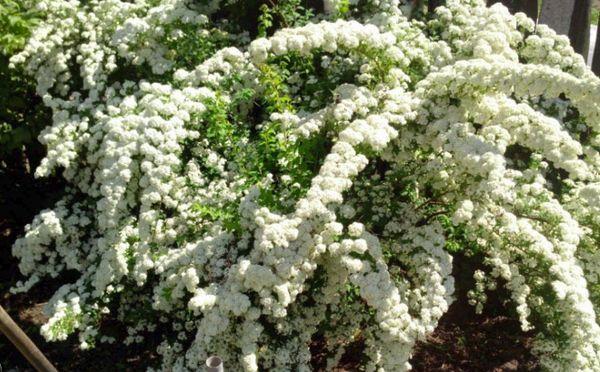
Of the pests on the shrub, aphids, whiteflies, spider mites or blue meadow sawfly are more common. Fitoverm, Metaphos and Aktellik help to eliminate these insects.
Reproduction methods
Spirea can be propagated by seeds, layering or cuttings. The first option is the most labor-intensive and produces results less often. To propagate a plant, it is necessary to sow the seeds in containers filled with a mixture of leafy earth and peat. After that, the soil should be treated with Fitosporin or a solution of potassium permanganate. After 60-90 days after the appearance of the first shoots, the plant is transplanted to the site.
Reproduction by layering is carried out in the spring. At this time, you need to press one of the lower branches to the ground, removing and sprinkling the end with earth. In autumn, the shoot should be covered with leaves. Next spring, when the branch takes root, you can start replanting the bush to a new location.
Shrub division is the most effective breeding method.To get a new plant, you need to cut off in summer or autumn (depending on the variety) and place the cutting in a mixture of sand and peat. The next spring, a new bush is planted on the site.

The nuances of growing in Siberia, the Urals, in the Moscow region
In the Moscow region and the southern part of the Urals, most varieties of spirea can be grown. It is recommended to plant dwarf shrubs in the northern regions of the country, while not forgetting to create a shelter.
Application in landscape design
Due to the variety of varieties, spirea is often chosen for the formation of landscape design. The shrub is planted both as a single plant and in the vicinity of other crops. Dwarf varieties of spirea are planted along paths or on alpine slides. Tall bushes are used to create hedges.
